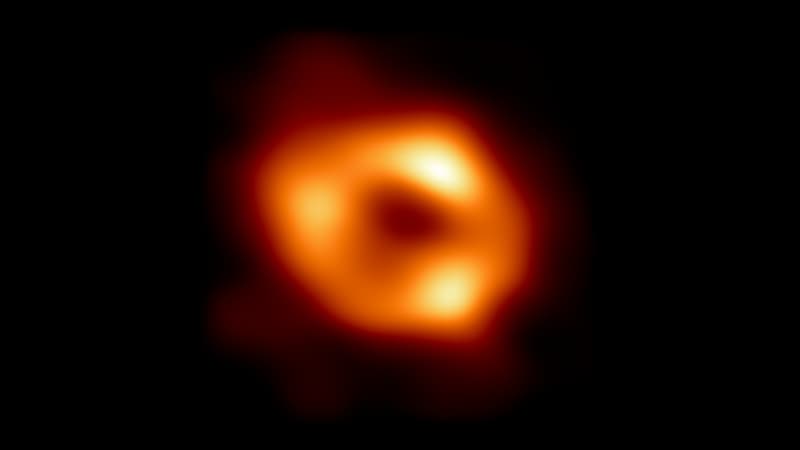We thought the colossus was asleep but it turns out to be more gluttonous than expected: Sagittarius A*, the supermassive black hole that lurks at the center of the Milky Way, experienced a powerful upsurge of activity in the recent past after gobbling up cosmic objects in its reach.
The party took place 200 years ago and NASA’s IXPE space satellite recently detected an echo of it, according to a study published Wednesday in Nature.
Sagittarius A* (Sgr A*), which owes its name to its detection in the constellation Sagittarius, is located 27,000 light-years from Earth, in the heart of our galaxy. It was observed in the 1990s by astrophysicists, and its presence was confirmed in images a year ago.
A mass of about four million suns.
With a mass of around four million suns, 13 billion years old, “it has always been seen as an inactive black hole,” Frédéric Marin of the Strasbourg Astronomical Observatory, who led the work, told AFP.
Sgr A* is in a quiescent state, like most supermassive black holes in the galactic centers that have swallowed all matter within their radius of attraction. “You can imagine a bear going into hibernation after having devoured everything around it,” adds this CNRS researcher.
gas and dust involved
But his team discovered that at the end of the 19th century (a period established through distance estimation), the monster awoke from its torpor and gobbled up gas and dust that passed too close to it, for several months or even a year. . Before going back to sleep.
During this period, Sgr A* was “at least a million times brighter than it is today,” explains Frédéric Marin. That’s a power equivalent to that of the extremely active supermassive black holes at the origin of quasars, like its congener M87* in the Messier 87 galaxy, 55 million light-years away.
Sgr A*’s appetite spike was betrayed by the unusual radiation from the molecular clouds in its vicinity: giants made of frozen gas and dust, “by definition cold” and which “should not emit as much light in X-rays (invisible to humans). humans). eye, Ed)”, according to the researcher.
Source: BFM TV


